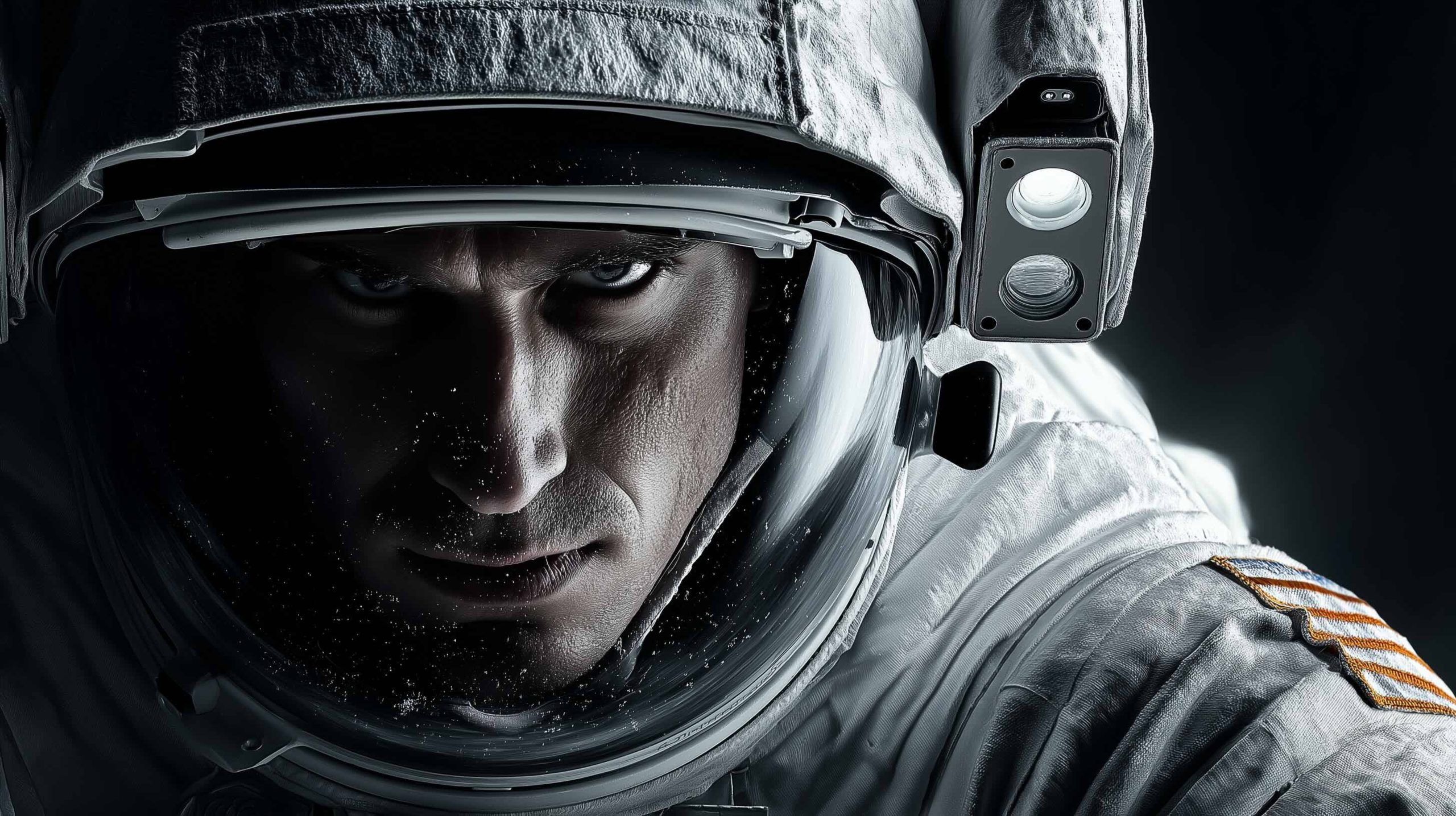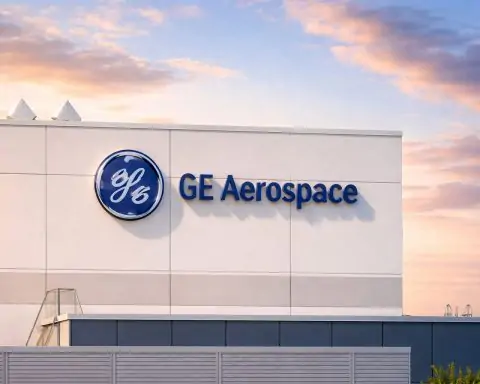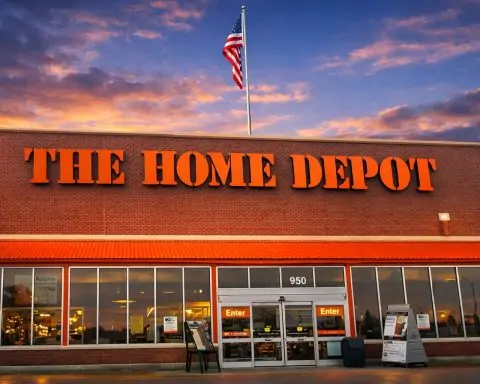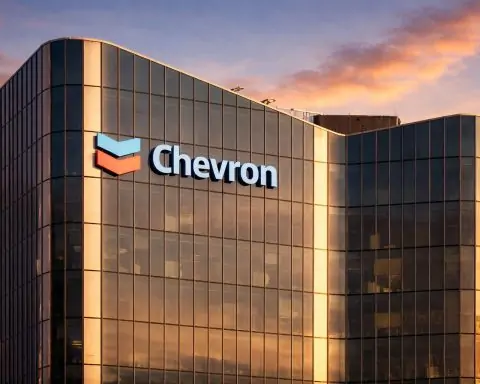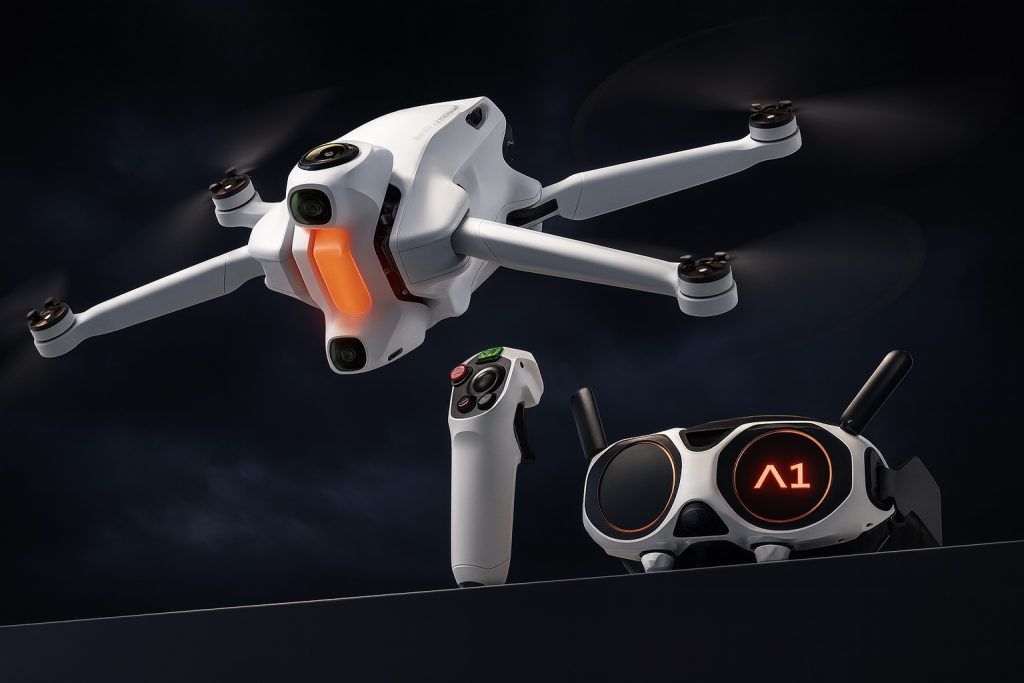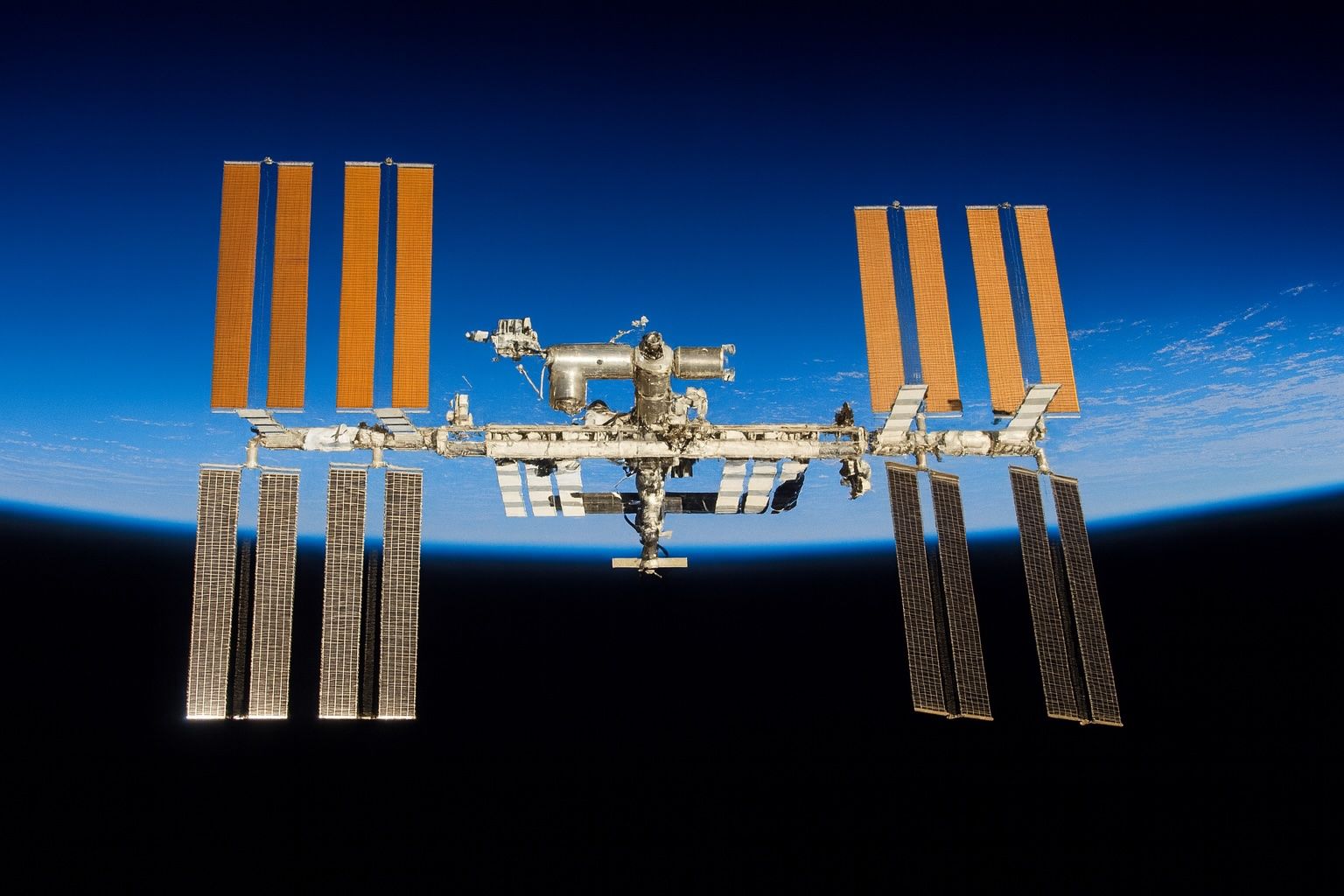- In July 2021, Virgin Galactic’s SpaceShipTwo carried a full crew above 80 km.
- In 2023, Virgin Galactic began commercial service for private space tourists.
- Blue Origin’s New Shepard suborbital flights cross the Kármán line at about 100 km and last 10–15 minutes.
- The first Blue Origin seat was auctioned for $28 million, with routine prices in the few hundred-thousand-dollar range.
- SpaceX’s Inspiration4 mission in September 2021 was the first all-civilian orbital flight, with a four-person crew trained for about six months.
- Axiom Space’s Ax-1 mission in April 2022 carried three private customers paying about $55 million per seat for a 10-day stay aboard the ISS, commanded by a former NASA astronaut.
- In late 2021, Yusaku Maezawa and his assistant flew to the ISS on a Soyuz for 12 days.
- NASA’s Artemis II will circle the Moon with a crew of four, including three NASA astronauts and one Canadian.
- SpaceX’s Starship is designed to carry up to 100 people, has not yet flown a crew as of 2025, and has contracts to support NASA’s Artemis lunar landings; Dennis Tito and his wife have been sold a future Moon flyby on Starship.
- Orbital Reef, a Blue Origin–Sierra Space project, aims to launch in the late 2020s as a 250-mile-high mixed-use orbiting facility.
The New Era of Space Travel
Spaceflight is no longer reserved for a select few government-trained astronauts. In 2025, a new era of space travel is unfolding, offering multiple pathways for ordinary people – not just career astronauts – to reach the stars. Fewer than 700 humans have ever traveled to space in the past six decades [1], but that number is poised to grow rapidly as commercial space tourism, private astronaut missions, and international programs open the final frontier to more participants than ever before. “We’re here to make space more accessible to all. Welcome to the dawn of a new space age,” announced Virgin Galactic founder Richard Branson after flying to space himself [2]. From suborbital joyrides that give you a few minutes of weightlessness, to orbital excursions lasting days or weeks, all the way to upcoming lunar trips, here’s an in-depth guide to every way you can go to space – including how to qualify, how much it costs, and what to expect on your journey.
Commercial Space Tourism: Your Ticket to the Final Frontier
One of the most exciting developments is commercial space tourism – in which private companies fly paying customers on rockets or spaceplanes. Several firms have now demonstrated the capability to take civilians above the atmosphere for an unforgettable experience:
- Suborbital “Hop” to Space: Companies like Virgin Galactic and Blue Origin offer short suborbital flights that graze the edge of space. In July 2021, Branson’s Virgin Galactic spaceplane first carried a full crew above 80 km altitude, and in 2023 the company began commercial service [3] [4]. Virgin Galactic uses a unique air-launched rocket plane (SpaceShipTwo) that gives passengers a breathtaking view at about 87 km up, a few minutes of weightlessness, and a smooth runway landing [5] [6]. About 800 customers have already reserved seats – many years ago at ~$200,000 each, and now at $450,000 per ticket [7]. Similarly, Blue Origin (founded by Jeff Bezos) flies a rocket-and-capsule system called New Shepard straight up past the Kármán line (100 km) before parachuting back down [8]. Blue Origin’s flights last about 10–15 minutes in microgravity [9]. The company hasn’t published a fixed price; its first seat was auctioned for a headline-grabbing $28 million, but industry insiders estimate routine prices in the few hundred-thousand dollar range as well. These suborbital trips require only a few days of training and modest physical fitness – participants must fit within certain height/weight limits (about 5’0”–6’4” and 110–223 lbs for Blue Origin) and endure brief G-forces (~3 Gs on ascent and up to 5.5 Gs on reentry) [10]. In return, you earn bona fide astronaut wings for crossing into space, along with the life-changing view of Earth’s curvature against the blackness of space. “Touchdown, VSS Unity!” cheered Virgin Galactic after a successful test, “Our crew and spaceship are back on Earth… after reaching an altitude of 87 km” [11] [12]. These joyrides are short but transformational – as Blue Origin describes, “New Shepard astronauts… pass the Kármán line… float weightless and gaze at our planet… returning gently under parachutes, forever changed.” [13] [14]
- Orbital Adventures for Private Travelers: For those who want to go further (and can afford it), orbital space tourism has also become reality. SpaceX’s Crew Dragon capsule has now flown private citizens to orbit – not just suborbit. In September 2021, the Inspiration4 mission made history as the first all-civilian orbital flight, spending three days circling Earth [15]. The crew of four (led by billionaire Jared Isaacman, who chartered the flight) trained for about six months, including high-G jet flights and mountain treks to prepare for the adventure [16]. Also, startup company Axiom Space has begun arranging private missions to the International Space Station (ISS): In April 2022, Axiom’s Ax-1 mission flew three wealthy customers (each reportedly paying $55 million for a seat) along with a former NASA astronaut as commander to spend 10 days aboard the ISS [17]. These paying “guest astronauts” conducted science experiments and soaked in the view from the station’s cupola window. A second Axiom mission (Ax-2 in 2023) carried two Saudi astronauts sponsored by their government and two others, continuing this trend of mixing private individuals into ISS crews. Even Roscosmos (Russia’s space agency) has revived its space tourism program: after a decade-long pause, Russia sold two seats on a Soyuz flight to Japanese billionaire Yusaku Maezawa and his assistant in late 2021 [18] [19]. Maezawa spent 12 days on the ISS as a tourist and even completed a list of 100 fun tasks in microgravity that he had crowd-sourced online. These orbital trips are far more expensive (tens of millions of dollars) and demanding than suborbital hops – training can take many months, and you must pass stringent medical evaluations to be cleared for an extended stay in space. But they offer a truly astronaut-like experience: orbiting Earth at 28,000 km/h, floating in zero-g for days, and potentially visiting a real space station. As NASA notes in its pricing policy, just the life support and supplies for a private astronaut’s stay on the ISS cost about $35,000 per night (billed to the private mission operator) [20] [21] – and that’s before the many millions for the rocket ride itself. Despite the cost, demand is growing. “I didn’t think I would be able to go to space… I feel fortunate to have this opportunity and to finally fulfill my dream,” said Maezawa before his flight [22]. His sentiment is shared by an exclusive few who have orbited Earth as private explorers – a club that is expected to expand in coming years with additional missions already planned.
Experience and Perspective: Whether suborbital or orbital, space tourists consistently describe the journey as profound. Many report feelings of awe and a shifted worldview upon seeing our fragile Earth from above – often called the Overview Effect. Even William Shatner (Star Trek’s Captain Kirk), who flew a suborbital hop at age 90, was moved to tears by Earth’s beauty and the thinness of its atmosphere. Virgin Galactic’s recent flight in August 2023 carried the first mother-daughter duo to space – Keisha Schahaff and her 18-year-old daughter, who won their seats via a charity lottery. “The fact that I am here, the first from Antigua, shows that space really is becoming more accessible,” said Keisha, adding that she hopes to inspire others in her community [23]. Virgin Galactic’s CEO echoed that democratizing spirit: “Watching Keisha, Ana and Jon [Goodwin, an 80-year-old Olympian] embark on this transformative experience helps demonstrate that space is now opening to a broader and more diverse population across the globe.” [24] Commercial tourism has truly arrived, and it’s breaking age, gender, and nationality barriers in the process.
Become an Astronaut: Government & International Space Programs
For those willing to put in years of education and training, joining a national astronaut corps remains a more traditional – if highly competitive – route to space. Agencies like NASA, the European Space Agency (ESA), and others periodically recruit new astronaut candidates from the general public (usually citizens of their own country/region). The odds are long, but the rewards include professional space missions, including long-duration flights and deep-space exploration. Here’s what it takes:
- NASA Astronaut Corps (United States): NASA typically holds selection rounds every few years. Thousands apply, but only a dozen or so are chosen in each class. In the 2020–2021 cycle, over 12,000 people applied for just 10–12 slots [25]. Minimum requirements included U.S. citizenship, a master’s degree in a STEM field, and either 3 years of relevant professional experience (e.g. as a scientist, engineer, or medical doctor) or 1,000+ hours piloting jet aircraft [26]. Applicants must also pass a rigorous physical exam for long-duration spaceflight (similar to a military flight physical, with strict vision, blood pressure, and overall health standards) [27]. Those who make the cut become Astronaut Candidates and undergo ~2 years of basic training – learning spacecraft systems, geology, robotics, Russian language, spacewalking skills, and more [28] [29]. After graduation, they are eligible for assignment to missions. NASA astronauts today may spend 6 months on the ISS conducting science, and in the coming years could fly to the Moon as part of the Artemis program. (The Artemis II mission, for example, will send a crew of four around the Moon, including three NASA astronauts and one Canadian.) Being a NASA astronaut is essentially a full-time job – and it’s one of the hardest jobs to get. But it’s open to “a wide variety of backgrounds,” says NASA, from medical doctors to test pilots to scientists [30]. If you meet the qualifications and have the “right stuff” to impress the selection board, this path offers perhaps the most in-depth space experience of all: operating complex vehicles, performing spacewalks, and representing your country off Earth. (Not to mention, as federal employees, NASA astronauts are actually paid – modestly – rather than paying for their flights!)
- International Astronaut Programs: If you’re not American, most major spacefaring nations have their own astronaut selection processes. The European Space Agency (ESA), for instance, held a recruitment in 2021 that drew a staggering 22,500+ applicants from across Europe [31] – ultimately selecting just 5 career astronauts and a dozen reserve candidates in 2022. The basic criteria were similar (STEM degree, professional experience, excellent health, and fluency in English), though ESA made headlines by including a special opening for a “parastronaut” – an astronaut with a physical disability – as part of a feasibility study to make spaceflight more accessible [32] [33]. (John McFall, a British paralympian with a prosthetic leg, was selected into the reserve under this program.) Other agencies like the Canadian Space Agency (CSA), Japan’s JAXA, and Russia’s Roscosmos recruit smaller classes even less frequently. In all cases, only a tiny fraction of applicants will ever fly. Yet, the dream is alive: in 2019, for example, NASA’s astronaut class included teachers, physicians, engineers, and scientists – even a cyclist and a Navy SEAL – all united by a passion for exploration [34]. As NASA Administrator (and former space shuttle astronaut) Bill Nelson remarked, it’s “hard to believe back [in the 1980s] that one day it would be possible for regular tourists to travel to space the way it’s happening today” [35]. But through both government and private avenues, human spaceflight is expanding. If you aspire to be a career astronaut, focus on STEM education, gain unique operational experience, stay extremely fit, and be ready for a marathon selection process – you just might make the next class.
What the Training Entails: Those lucky enough to be selected by a space agency undergo years of intensive preparation. They learn to fly jets, spend hours in simulators, train underwater in spacesuit replicas, and practice survival skills for landing scenarios. The physical and mental challenges are significant – yet astronauts uniformly say it’s worth it. “I was once a child with a dream looking up at the stars. Now I’m an adult in a spaceship looking down at our beautiful Earth,” Branson mused during his flight [36]. That poetic reflection underscores the common thread between professional astronauts and space tourists alike: a lifelong dream fulfilled through hard work and a bit of daring.
Private Missions, Citizen Science & Creative Projects
Beyond buying a ticket or becoming a government astronaut, there are alternative pathways emerging – from nonprofit-sponsored spaceflights to special contests and research missions – that can send ordinary people (teachers, artists, scientists, even contest winners) to space:
- Sponsored “Citizen Astronaut” Programs: Nonprofit organizations like Space for Humanity have started programs to democratize access to space. In 2023, Space for Humanity sponsored two seats on a Virgin Galactic flight for a Caribbean community leader, Keisha Schahaff, and her daughter – the first astronauts from Antigua [37] [38]. They won this opportunity via a global fundraising lottery that raised $1.7 million for charity [39]. “Space is for everybody. It’s not just for a few people… that’s our new frontier out there,” said astronaut teacher Christa McAuliffe many years ago, and at last we’re seeing initiatives to make that a reality [40]. Space for Humanity’s Citizen Astronaut Program invites ordinary change-makers to apply for a sponsored trip to space and the chance to experience the Overview Effect, in exchange for committing to use that experience to benefit their communities back on Earth [41]. Similarly, contests and campaigns have put seats within reach of non-wealthy individuals: the Inspiration4 mission awarded one of its four Crew Dragon seats via a charity raffle open to anyone who donated to St. Jude Children’s Research Hospital [42], and another seat to a small-business entrepreneur through a competition. These creative approaches – essentially golden tickets to space – show that you don’t always need to be a billionaire to fly; sometimes a compelling story or a stroke of luck can be your launchpad.
- Research and Education Missions: Some civilians have gone to space as researchers or educators. For example, NASA’s “Teacher in Space” program famously selected Christa McAuliffe to join the Space Shuttle Challenger (though tragically that mission was lost in 1986). Today, variants of that vision live on. Educator-astronaut Barbara Morgan, McAuliffe’s backup, eventually flew to the ISS in 2007 to help teach lessons from orbit. In 2021, a Russian film crew (a director and actress) flew to the ISS to film scenes for the first feature movie in space [43]. And in 2023, Virgin Galactic’s very first commercial flight (Galactic 01) carried scientists from the Italian Air Force who performed microgravity experiments during their suborbital hop [44]. NASA has also opened the ISS to private research astronauts (scientists who aren’t career astronauts but fly short missions to conduct experiments). If you’re a scientist or educator, there are emerging programs to support your flight – for instance, NASA’s Flight Opportunities program and private sponsors can fund experiments on suborbital vehicles, occasionally sending the researchers themselves along to operate equipment. Even artists have a place: performance artist Mihály Kóvács trained as a backup for a 2024 commercial ISS mission to create art in orbit, and other creative professionals are lobbying for residencies on future space stations.
- DearMoon and Creative Crew Missions: One highly publicized project was #dearMoon, funded by Japanese billionaire Yusaku Maezawa. Announced in 2018, dearMoon aimed to fly a crew of artists and creatives on a SpaceX Starship around the Moon – giving painters, musicians, and content creators a literal trip around our nearest celestial neighbor, hoping they would return and produce inspiring works of art. Maezawa invited applications globally and picked eight crew members (including a DJ, a photographer, a YouTuber, and an actor) in 2022. However, due to delays in SpaceX’s Starship development, Maezawa made the tough decision in 2024 to cancel (or at least indefinitely postpone) the dearMoon flight rather than keep the artists waiting for years [45]. “I feel terrible making the crew members wait longer, hence the difficult decision to cancel… I apologize to those who were excited,” Maezawa wrote, after Starship had yet to fly a crewed test by mid-2024 [46]. The dearMoon saga illustrates both the promise and unpredictability of new space ventures: it was an audacious idea to bring non-professional astronauts on a journey around the Moon (something only 24 Apollo astronauts have ever done), but technical realities intervened. Still, the project’s spirit lives on – it demonstrated that artists and everyday dreamers can have a place in space exploration. We may yet see a revised version of dearMoon or similar missions in the future, especially as new spacecraft come online.
Bottom line: Opportunities for “average” people (albeit often with extraordinary stories or sponsor support) to go to space are increasing. If you’re passionate about space but not an engineer or pilot, you might consider looking into these nontraditional pathways. Keep an eye on announcements from nonprofits, competitions by space companies, and public outreach missions. Today it’s not unheard of for a cancer survivor or a STEM student or a social media contest winner to end up flying to space. “Even the sky is not the limit for you… If I can do it, so can you,” said Hayley Arceneaux, a 29-year-old cancer survivor who became the youngest American in space on Inspiration4 [47]. Her inspirational message to her young patients (she’s a St. Jude physician assistant) encapsulates this new era: the people launching into space increasingly look like all of us.
Suborbital vs. Orbital vs. Lunar: How Far Can You Go?
Not all “space” trips are equal – the distance and duration of your journey can range from brief skims above the atmosphere to week-long sojourns in orbit to (soon) loops around the Moon. It’s important to understand the different categories of spaceflight opportunities:
- Suborbital Flights: These are the quickest and simplest trips – your spacecraft goes up just past the edge of space and comes right back down without circling the Earth. Both Virgin Galactic and Blue Origin flights are suborbital. They typically reach altitudes of about 80–110 km, high enough to earn astronaut wings (internationally, 100 km is the Kármán Line defining space). Passengers experience a few minutes of weightlessness at the peak of the trajectory and can see the blackness of space and the curvature of Earth. The entire flight is over within 10–15 minutes of rocket engine cutoff (plus parachute descent or glide back). Suborbital flights are ideal for experiencing space on a short trip – relatively lower cost, minimal training, and lower physical demands (no prolonged zero-g side effects, etc.). On the downside, you don’t get to orbit Earth or reach the ISS – it’s essentially a high-altitude up-and-down thrill ride. Think of it as space “sampling” – a taste of space without committing days or weeks.
- Orbital Missions: To actually orbit Earth, a spacecraft must reach ~28,000 km/h horizontal velocity. This requires a more powerful rocket (and more complex training for passengers), but in return you get to circle the globe every 90 minutes, experiencing sunrise and sunset from space multiple times a day. Orbital trips can last anywhere from a single orbit (a few hours) to several days or even months (on the ISS). Current orbital tourist options include private Crew Dragon flights (e.g. Inspiration4’s 3-day free-flyer, or Axiom missions spending ~8 days docked at ISS). The cost is exponentially higher than suborbital – tens of millions of dollars – and participants undergo full astronaut-style training and medical screening. Orbital flight exposes you to more significant challenges: you’ll experience space adaptation syndrome (motion sickness in microgravity) for a day or two, you must learn to use space toilets and live in confined quarters, and radiation exposure and other health considerations become relevant if you stay up for long. However, you truly become an astronaut crew member on these missions, often with a defined role or research plan, and you get to float freely for extended periods. The views from orbit – such as looking down on Earth’s surface from 400 km up – are exponentially more expansive than a suborbital peek. Many private orbital flyers have commented that the hardest part was returning to Earth because nothing compares to the experience of living in space.
- Lunar and Deep Space Voyages: We are on the cusp of civilians traveling beyond Earth orbit. NASA’s Artemis program will return astronauts (professionals) to the Moon starting around 2025, but there are also private lunar missions in the works. SpaceX, with its next-gen Starship vehicle, has ambitions to send private passengers on translunar flights. In fact, SpaceX has already sold a future Starship trip around the Moon to Dennis Tito – an 83-year-old billionaire who was the world’s first space tourist back in 2001 – along with his wife, potentially making them the first elderly couple to fly by the Moon [48]. These missions would be multi-day journeys: looping around the Moon and coming back, which might take about 6–8 days total. The experience would be truly extraordinary – viewing the Moon up close, seeing Earth as a distant marble, and entering the record books alongside the Apollo astronauts. But they also carry higher risk and complexity. No private mission has attempted this yet (and as noted, the dearMoon attempt was canceled due to delays). Any lunar tourist flight will likely require rigorous astronaut-level training and deep pockets (costs are not public, but likely over $100 million). Looking ahead to deep space, human trips to Mars or beyond are still on the drawing board; these would be multi-month expeditions and are not expected to include tourists for quite some time (likely initially only highly trained astronauts). Still, companies like SpaceX explicitly state their long-term vision is to enable “multiplanetary” life, and some adventurous souls today openly express interest in one day buying a ticket to Mars. For now, the farthest a private individual can go is the Moon’s vicinity – and even that has yet to be demonstrated. But in a very real sense, the goalposts are moving outward. Within the next decade, we may see civilian crews orbiting the Moon, staying in private lunar landers, or visiting space hotels positioned in deep space orbits. Each step will make the once-impossible dream of traveling throughout the solar system a bit more achievable for the rest of us.
What It Takes: Training, Health and Safety Considerations
Going to space – by any method – isn’t exactly like booking a plane ticket. Here are some practical factors to know if you’re dreaming of your own launch:
- Application & Selection: Whether you apply to NASA or sign up with a private company, expect a thorough vetting process. Government astronaut selection can take over a year of interviews, exams, and background checks before the finalists are picked [49]. Commercial spaceflight customers or contest winners undergo medical screening too; you don’t need to be a superhuman, but you should be in generally good health, with well-managed blood pressure, no serious heart or lung conditions, and within certain anthropometric limits. For instance, Blue Origin’s form asks about conditions like epilepsy or recent surgeries that could disqualify a participant, and enforces height/weight limits as mentioned. If you’re older or have a disability, some opportunities still exist (witness 80-year-old Jon Goodwin flying with Parkinson’s disease on Virgin Galactic [50]), but each case is evaluated individually for safety. The key is, honesty in your medical disclosures and following all pre-flight instructions (like any required conditioning exercises or diet changes) will maximize your chances of passing the flight surgeon’s review.
- Training Requirements: The length of training varies widely:
- Suborbital tourist flights usually include only 2–3 days of pre-flight training at the spaceport. During this time, you’ll go over safety procedures, learn how to buckle in and what to do in zero-g, practice ingress/egress from the vehicle, and get briefed on the flight profile. Companies strive to make this fun and not too taxing – think of it as “astronaut orientation.” For instance, Blue Origin has an “Astronaut Village” in West Texas where customers stay and prepare together [51] [52]. Virgin Galactic’s trainers (led by Chief Astronaut Instructor Beth Moses) guide passengers through simulations of the weightless cabin so they can maximize those precious minutes in space [53].
- Orbital flights require extensive training, often several months full-time. Private astronauts bound for ISS train alongside professional astronauts in many cases – learning spacecraft systems (so they can respond to emergencies), practicing orbital mechanics and docking, zero-g camp (to acclimate to floating), and even learning some basic Russian if going to the ISS (since much of ISS operations use both English and Russian). Crew Dragon private crews spend time at SpaceX’s facilities running launch and re-entry simulations, and undergo centrifuge training to feel the G-forces. They also do team-building expeditions (the Inspiration4 crew climbed a mountain together, for example) [54]. This training not only builds skills but also builds trust among the crew – crucial when you’re confined together in a capsule hundreds of kilometers above Earth.
- Deep space missions (future lunar/Mars) would entail years of preparation, likely including long-duration isolation simulations (such as living in habitat mock-ups), extravehicular activity training (for lunar walks), and other specialized drills. If you have your sights on Mars tourism someday, be prepared for a real astronaut’s training regimen!
- Physical Demands: Short trips are surprisingly forgiving – many individuals in their 50s, 60s, even 70s and 80s have done fine on suborbital and orbital flights. You do not need to be an elite athlete. That said, spaceflight does stress the body in unique ways. You’ll experience rapid acceleration at launch (3–4 G’s pressing you into your seat, like a really intense rollercoaster) and possibly some higher G spikes on reentry. Your inner ear may get confused in microgravity, causing nausea until you adapt. Your face might puff up as fluids redistribute in zero-g, and back pain is common after a few days as the spine extends without gravity. Fortunately, for suborbital hops these effects are minimal (the flight’s too short to get space sickness, for example). On orbit, most people acclimate after the first 1–2 days. Training will teach you techniques to mitigate discomfort (e.g. pressure breathing to counter G-forces, medication for motion sickness). There are also basic fitness requirements: you should be able to climb stairs easily (spacecraft ladders), fit through hatches, and in an emergency, exit the capsule unassisted. Blue Origin notes that participants must be able to fasten and unfasten their harness in under 15 seconds and walk quickly to an exit [55]. These might seem like trivial skills, but imagine doing them under stress or unusual conditions – that’s why they’re tested.
- Psychological Factors: Don’t underestimate the mental aspect. You’ll be strapped into a small capsule, potentially with the world’s most powerful explosives beneath you – that can rattle anyone’s nerves. Astronaut training includes lots of simulations of things going wrong, so that if an alarm blares at 100 km up, you won’t panic but respond methodically. Teamwork and communication are critical; crews often report that the bond they form is one of the most rewarding parts of the experience. Space agencies subject candidates to psychological screenings to ensure they can handle isolation and confinement. For a short tourist flight, the stakes are lower, but it’s still wise to know your own stress responses and practice mindfulness or other coping techniques. The flip side of fear is the euphoria and perspective shift many get looking back at Earth – some people even describe a profound emotional overwhelm (happy tears are common). As astronaut Ron Garan said, “In space, you don’t see boundaries or borders. We are all citizens of Earth…” – that realization can be deeply moving [56].
- Risks and Safety: All space travel carries risk. Rockets are essentially controlled explosions, and space is a harsh environment for humans. Spaceflight remains far riskier than commercial air travel. Historically, roughly 1 in 50 human spaceflights has ended in a fatal accident, though safety is improving [57]. NASA’s Space Shuttle saw 2 deadly missions out of 135 (a ~1.5% fatal outcome) [58]. New vehicles like SpaceX’s Dragon are designed with abort systems and other features to reduce risk – NASA officials estimate Dragon is about 3 times safer than the Shuttle was in its final years [59]. Still, the emerging space tourism industry operates under an “informed consent” regime (especially in the U.S.): companies must disclose the risks, but unlike airlines, they don’t yet have strict government certification of their spacecraft for passenger safety [60]. That means early space tourists are essentially test pilots in some respects. There have been close calls and tragedies: Virgin Galactic suffered a fatal accident during a 2014 test flight [61], and Blue Origin had an uncrewed rocket failure in 2022 that grounded flights for a year. Anyone considering a flight must go in with eyes open: you’ll sign extensive waivers acknowledging the danger. As SpaceX’s Jared Isaacman said comparing risks, “we’ve been tearing up the sky in fighter jets… I put [that] at a relatively higher risk than this mission” [62] [63] – meaning that in his view, driving racecars or aerobatic flying was riskier than riding a SpaceX rocket. Each individual must decide their own risk tolerance. The good news is that companies truly do prioritize safety – “safety is our highest priority,” Blue Origin declares in its mission statement [64] [65]. Multiple redundant systems, escape rockets, pressure suits, and rigorous test campaigns are all in place to protect human life. And every successful flight builds confidence. But as astronaut John Young quipped, “Anyone who sits on top of the largest hydrogen-oxygen fueled rocket ever built, knowing they’re going to light the bottom – and doesn’t get a little worried – does not fully understand the situation.” [66] A healthy respect for the risk is part of being a space traveler.
In short, preparing to go to space involves more than buying a ticket. You must train your body and mind, clear medical and security hurdles, and embrace a certain level of risk. Yet those who have gone through it compare it to a pilgrimage or the greatest adventure of their lives. If you’re dreaming of space, start getting ready now – improve your fitness, learn about aerospace, maybe try zero-g airplane flights or centrifuge training offered by space adventure companies. As opportunities expand, you want to be ready for launch when your chance comes.
Upcoming Vehicles and Future Space Opportunities
The landscape of space travel is evolving fast. New rockets, space stations, and tourism companies promise to further expand how and where ordinary people can go in the coming years:
- SpaceX Starship – Opening the Solar System: SpaceX’s Starship is a next-generation fully reusable spacecraft in development, envisioned to carry up to 100 people or 100+ tons of cargo per launch. Still in testing (it has not yet flown a crew as of 2025), Starship is central to plans for lunar tourism and Mars colonization. Once operational, its massive capacity could dramatically cut the cost per person for reaching orbit or beyond. SpaceX has contracts to use Starship for NASA’s Artemis lunar landings, and also for private missions like the now-canceled dearMoon and Dennis Tito’s planned Moon flyby. If Starship succeeds, we might see space voyages that were purely sci-fi become accessible – such as week-long luxury cruises around the Moon, or even early civilian expeditions to Mars. Elon Musk has stated his vision of “a future where millions of people will live and work in space” [67], and Starship is the vehicle designed to make that possible. In the nearer term, Starship could also enable point-to-point suborbital travel on Earth (flying across the globe via space in under an hour) – essentially space tourism as ultra-fast transit. Keep an eye on Starship test flights in the next year or two; its progress will be a huge factor in future space opportunities.
- Commercial Space Stations and Space Hotels: The ISS is set to retire by 2030, and private companies are building new stations to replace it – which will host not only astronauts but also tourists, researchers, and even movie production crews. One major project is Orbital Reef, led by Blue Origin and Sierra Space, envisioned as a “mixed-use business park” in orbit about 250 miles up [68]. Orbital Reef aims to have modules for research, but also habitation modules with big windows for space tourism in comfort [69]. Blue Origin describes it as providing “a truly extraordinary experience, whether you are in orbit for research, logistics, tourism, or other applications.” [70] The first Orbital Reef modules could launch in the late 2020s. Meanwhile, Axiom Space is launching its own modules to attach to the ISS as early as 2025, which will eventually detach and form “Axiom Station,” a free-flying commercial space station. Axiom Station will have quarters for paying visitors (they are already flying private crews as we covered) and could operate as the first true space hotel by the end of the decade [71] [72]. There are even designs for luxury rotating hotels with artificial gravity – for example, Orbital Assembly Corporation has proposed a Voyager Station (a wheel-shaped hotel that spins to create gravity) with hopes of opening in the 2030s. While timelines often slip, it’s very plausible that by the time today’s teenagers are grown, staying a week in an orbital hotel (albeit at a very hefty price) will be an actual vacation option.
- Stratospheric Balloon Trips: Not all “space” experiences require rockets. Companies like Space Perspective and World View are developing high-altitude balloon capsules that lift passengers to the edge of space – about 30 km up, three times higher than commercial airplanes, though still below the official boundary of space. Space Perspective’s pressurized capsule, Neptune, will carry 8 passengers up to ~100,000 feet gently over ~2 hours, let them spend ~2 hours gazing at the Earth’s curvature and the darkness of sky, then descend under a parachute – all with zero rockets and zero G-forces [73]. The ride is smooth, more like a 6-hour journey in a luxury lounge that happens to be hanging beneath a balloon. Tickets are priced around $125,000 per seat [74] [75], notably less than suborbital rocket trips, and over 1,500 reservations have already been made [76]. While 30 km is not space by strict definition (there’s still some atmosphere), the view and experience – the black sky, the visible curvature of the Earth, the utter quiet – are often described as space-like. This could be an attractive option for those who want the overview effect without the physical strain or risk of a rocket launch. Space Perspective plans to begin these flights by 2024–2025 if all goes well. It’s an example of how the industry is diversifying the menu of experiences.
- Next-Gen Space Tourism Companies: In addition to the players mentioned, others are on the horizon. Virgin Galactic is developing a next model of spaceplane (the Delta class) to enable up to 400 flights per year in the future [77]. Blue Origin is working on a larger rocket, New Glenn, which could one day carry humans to orbit or to an orbital reef. Boeing’s Starliner capsule, once operational, may also carry private astronauts to the ISS or future stations (alongside its NASA missions). Entrepreneurial ventures backed by wealthy space enthusiasts continue to pop up – from Space Hero, a proposed reality TV competition to send a winner to space, to discussions of national lotteries for spaceflight in various countries. As launch costs eventually come down and space access increases, we might even see ticket prices slowly fall into more affordable territory (for now, though, anything beyond the stratospheric balloon is still priced for the ultra-rich or sponsored). The year 2023 saw the first commercial astronaut class graduate from Virgin Galactic – giving the title “astronaut” to a group of paying customers and instructors. The symbolism is strong: the line between a “professional astronaut” and a “spacegoing private citizen” is blurring. In the future, we may simply talk about “space travelers” of many kinds.
Conclusion: The Sky is Not the Limit
In summary, there are more ways to go to space today than ever before in history:
- You can buy a suborbital ride with a commercial company for a brief but incredible space experience.
- You can train as a private astronaut and visit the International Space Station for a hefty fee.
- You can pursue the long road of becoming a national astronaut and spend your career exploring frontiers.
- You might win a contest or get sponsored for a once-in-a-lifetime mission, especially if you leverage your story, art, or science for a broader cause.
- And soon, you might check into an orbital hotel or circumnavigate the Moon on a commercial spacecraft.
Each route has its own requirements, costs, and risks, but the fact that these options exist at all is astonishing. Space is opening up. As astronaut Hayley Arceneaux urged from orbit: “Even the sky is not the limit…” [78]. The opportunities to reach for the stars are growing with each passing year.
For those inspired by these developments, now is the time to act. Start saving up (or fundraising) for that ticket, or hit the books and the gym to become a top-notch astronaut candidate. Follow official company and agency channels for announcements – many have newsletter sign-ups for future flight openings. And most importantly, keep the dream alive. A generation ago, the idea of an ordinary person going to space was pure fiction. Today it’s within reach, and tomorrow it will be even closer. As Jeff Bezos – who went to space at age 57 – said, “It’s this generation’s job to build a road to space, so that future generations can unleash their creativity.” [79] Each pioneer buying a ticket or applying for a mission is helping pave that road.
Space is for everybody, and whether you’re an adventurer, a scientist, an artist, or an everyday citizen with a dream, there is likely a path for you to touch the stars. The thrill of launch, the beauty of Earth from above, and the sheer adventure of crossing the final frontier are no longer reserved for test pilots and astronauts in uniforms. So go ahead – reach out and take your place in space. As one space tourist famously said upon return, “I’m back on Earth, and I’m still in awe. It was worth every penny.” Welcome to the new space age, where the sky is not the limit.
Sources: [80] [81] [82] [83] [84] [85] [86] [87]
References
1. press.virgingalactic.com, 2. www.thehansindia.com, 3. www.aljazeera.com, 4. www.aljazeera.com, 5. www.aljazeera.com, 6. www.aljazeera.com, 7. www.aljazeera.com, 8. www.aljazeera.com, 9. www.aljazeera.com, 10. www.aljazeera.com, 11. www.aljazeera.com, 12. www.aljazeera.com, 13. www.blueorigin.com, 14. www.blueorigin.com, 15. www.space.com, 16. sophisticatedwoman.com, 17. apnews.com, 18. www.theguardian.com, 19. www.theguardian.com, 20. www.thehansindia.com, 21. www.thehansindia.com, 22. www.theguardian.com, 23. press.virgingalactic.com, 24. press.virgingalactic.com, 25. www.nasa.gov, 26. www.nasa.gov, 27. www.nasa.gov, 28. www.nasa.gov, 29. www.nasa.gov, 30. www.nasa.gov, 31. www.esa.int, 32. www.esa.int, 33. www.esa.int, 34. www.nasa.gov, 35. www.thehansindia.com, 36. www.thehansindia.com, 37. press.virgingalactic.com, 38. press.virgingalactic.com, 39. press.virgingalactic.com, 40. spacequotations.com, 41. press.virgingalactic.com, 42. www.aljazeera.com, 43. www.theguardian.com, 44. www.aljazeera.com, 45. www.space.com, 46. www.space.com, 47. sophisticatedwoman.com, 48. www.aljazeera.com, 49. www.esa.int, 50. press.virgingalactic.com, 51. www.blueorigin.com, 52. www.blueorigin.com, 53. press.virgingalactic.com, 54. sophisticatedwoman.com, 55. abc7chicago.com, 56. x.com, 57. www.space.com, 58. www.space.com, 59. www.space.com, 60. www.space.com, 61. www.aljazeera.com, 62. www.space.com, 63. www.space.com, 64. www.blueorigin.com, 65. www.blueorigin.com, 66. spacequotations.com, 67. www.blueorigin.com, 68. www.blueorigin.com, 69. www.blueorigin.com, 70. www.blueorigin.com, 71. houston.innovationmap.com, 72. www.reddit.com, 73. www.space.com, 74. www.space.com, 75. www.space.com, 76. www.businessinsider.com, 77. www.aljazeera.com, 78. sophisticatedwoman.com, 79. www.blueorigin.com, 80. www.aljazeera.com, 81. www.aljazeera.com, 82. www.nasa.gov, 83. press.virgingalactic.com, 84. www.thehansindia.com, 85. sophisticatedwoman.com, 86. www.space.com, 87. www.blueorigin.com
